Free delivery from Fr. 300 of purchase or 18 bottles, otherwise Fr. 15

Italy
Viticulture in Italy dates back to the highest antiquity. The Romans, and before them the Etruscans, cultivated vines. The Greeks had given the territory the nickname Œnotria, meaning the land of wine (a name more specific to Calabria, then a Greek colony). Today's vineyards extend throughout the Italian regions from Valle d'Aosta to Sicily. Italy is now, according to the OIV, the world leader in wine production in terms of volume.
First known for its reds, it stands out for wines that are significantly more tannic and structured than their French or even Swiss counterparts. The great native grape varieties (e.g. nebbiolo, sangiovese, aglianico, nerello mascalese) are no strangers to this, as their temporal adaptation to their respective terroirs has resulted in grapes that ripen late, rich in tannins, naturally retaining a high degree of acidity and bitterness, with the latter components softening considerably when the grapes are harvested at maturity, then conferring on the wines a great potential for ageing, complexity and finesse. The most emblematic representatives are undoubtedly from Piedmont (Barolo, Barbaresco, Gattinara), Tuscany (Chianti Classico, Brunello del Montalcino), Campania (Falerno del Massico, Taurasi) and Sicily (Etna), although great red wines are produced in almost all Italian regions. In the north, for example, the best reds from the Valle d'Aosta shine with their unique fruity brilliance and easy-to-digest character, those from Lombardy with their extreme finesse, those from Trentino Alto Adige with their wild character, and those from Veneto with their rich body. In the centre, whether in Emilia-Romagna or Umbria, the wines are notably full-bodied and robust, while in the Marche, Abruzzi and Molise, they are characterised by a healthy rusticity. Finally, in the far south, the wines of Puglia transform sunshine into finesse, the volcanic reds of Basilicata combine the freshness of altitude with tension, while the little-known wines of Calabria display a certain darkness. Of course, we are not forgetting Piedmont, Tuscany, Campania and Sicily, whose best and greatest red wines have qualities of fragrance, structure, elegance and longevity that bring them to the top of national production, to match the neighbouring countries in the concert of the world's great wines, without any complex.
As for dry white wines, the potential of the boot will not be underestimated, because here too the autochthonous grape varieties, the soils and their location work wonders, from the extreme north to the extreme south. As an example, we can mention the small arvines from Valdot, the rare great rieslings from Piedmont, the miraculous wines of the Cinque Terre, the nosiola from Trentino, the fine soave from Veneto, the electrifying fiano and falanghina from the far south, the extraordinary carricante whites from Sicily, the autochthonous rarities from Sardinia, the maceration wines from Friuli, etc.
Finally, it is less well known that Italy is capable of producing extraordinary, time-defying sweet wines, whether they come from passerillage (most often) on racks or on stocks, or even from botrytis (rarer), with sometimes very long maturation. Let's mention some names that evoke discovery and travel: Aleatico dell'Elba, Passito di Pantelleria, Recioto della Valpolicella, Sciacchetrà, Vin Santo. And others. In any case, they reflect a know-how that has existed since time immemorial and are worthy of interest.
244 items

IGT Toscana, Montedesassi, Il Borghetto - 2013
Toscana IGT

Caisse Parcellaires Gaja 2013 6 bts (2 bts Costa Russi, S. Tildin, S. San Lorenzo)
Barbaresco
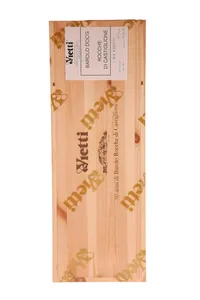
Barolo Rocche di Castiglione, Vietti (5 litres) - 2011
Barolo
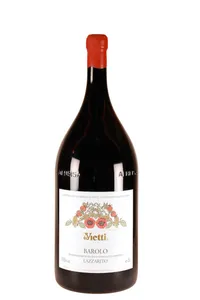
Barolo Lazzarito, Vietti (5 litres) - 2011
Barolo

IGP Toscana, Bilaccio, Il Borghetto - 2014
Toscana IGT

Barolo Cerretta, Giovanni Rosso - 2015
Barolo
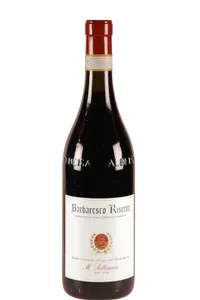
Barbaresco Riserva, Sottimano - 2013
Barbaresco

Barbaresco Costa Russi, Gaja - 2017
Langhe
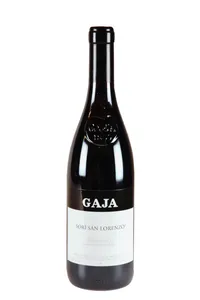
Barbaresco Sorì San Lorenzo, Gaja - 2017
Barbaresco
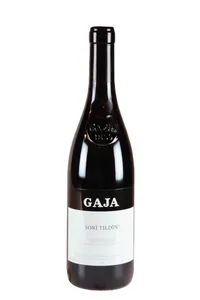
Barbaresco Sori Tildin, Gaja - 2017
Barbaresco

Campi Flegrei rosso, Pèr‘ E Palumm, Agnanum - 2019
Campi Flegrei

IGT Campania Piedirosso, Sabbia Vulcanica, Agnanum
IGT Campania